Comparative safety and effectiveness of oral anticoagulants in key subgroups of patients with non-valvular atrial fibrillation and at high risk of gastrointestinal bleeding: A cohort study based on the French National Health Data System (SNDS)
- PMID: 39841678
- PMCID: PMC11753696
- DOI: 10.1371/journal.pone.0317895
Comparative safety and effectiveness of oral anticoagulants in key subgroups of patients with non-valvular atrial fibrillation and at high risk of gastrointestinal bleeding: A cohort study based on the French National Health Data System (SNDS)
Abstract
Background: Risk factors and comorbidities can complicate management of non-valvular atrial fibrillation. We describe and compare real-world safety and effectiveness of direct oral anticoagulants (DOACs; apixaban, rivaroxaban, dabigatran) and vitamin K antagonists (VKAs) in subgroups of patients with non-valvular atrial fibrillation at high risk for gastrointestinal (GI) bleeding, utilizing data from a national quasi-exhaustive French database.
Methods: Anticoagulant-naïve adults with non-valvular atrial fibrillation with ≥1 gastrointestinal bleeding risk factor, initiating anticoagulant treatment January 2016-December 2019, and covered by the French national health data system were eligible. The following subgroups were evaluated: patients age ≥75 years, receiving concomitant medications, HAS-BLED score ≥3, and chronic kidney disease stage 3-4. Outcomes included major bleeding and stroke/systemic embolism. Patient characteristics were balanced using propensity score matching.
Results: A total of 314,184 patients were identified; characteristics were similar for propensity score-matched subgroups in VKA/DOAC and DOAC/DOAC comparisons. DOACs showed lower risk of major bleeding versus VKAs in all subgroups evaluated (p<0.0001 for all). Apixaban showed lower risk of major bleeding and gastrointestinal bleeding versus rivaroxaban in all subgroups (p≤0.05 for all) and versus dabigatran in elderly patients, patients with HAS-BLED score ≥3, and those receiving concomitant medications (p<0.05 for all). Stroke/systemic embolism risk was lower with apixaban versus rivaroxaban in elderly patients, those with HAS-BLED ≥3, and those receiving concomitant medications; risks were similar for other comparisons.
Conclusions: DOACs were associated with improved safety and effectiveness when compared to VKAs among subgroups of non-valvular atrial fibrillation patients at high risk of gastrointestinal bleeding. Apixaban was associated with lower risks of major bleeding, gastrointestinal bleeding, and stroke/systemic embolism versus rivaroxaban as well as lower risk of major bleeding, gastrointestinal bleeding bleed and similar risk of stroke/systemic embolism versus dabigatran among several of these patient subgroups.
Copyright: © 2025 Lip et al. This is an open access article distributed under the terms of the Creative Commons Attribution License, which permits unrestricted use, distribution, and reproduction in any medium, provided the original author and source are credited.
Conflict of interest statement
This was a BMS/Pfizer sponsored study. GYHL reported serving as a consultant and speaker for BMS/Pfizer, Boehringer Ingelheim, Daiichi-Sankyo, Anthos outside the submitted work. No fees are received personally. GYHL is a National Institute for Health and Care Research (NIHR) Senior Investigator and co-principal investigator of the AFFIRMO project on multimorbidity in AF, which has received funding from the European Union’s Horizon 2020 research and innovation programme under grant agreement No. 899871. RB reported serving as a consultant for Alfasigma, Medtronic, Falk, Mayoli and Pfizer. ACM reported serving as a consultant and speaker for Abbott, Bayer, BMS/Pfizer, Boehringer Ingelheim, and received research grant from BMS/Pfizer. GP, GG, AK and NQ are employees of Certara, who were paid consultants to Pfizer and Bristol Myers Squibb in connection with the conduct of this study. FD, FS, JC, RS and RM are employees and shareholders of Pfizer. This does not alter our adherence to PLOS ONE policies on sharing data and materials.
Figures

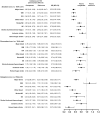
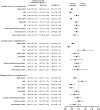
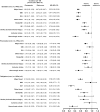
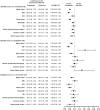
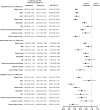
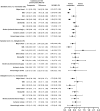


References
-
- Hindricks G, Potpara T, Dagres N, Arbelo E, Bax JJ, Blomstrom-Lundqvist C, et al.. 2020 ESC Guidelines for the diagnosis and management of atrial fibrillation developed in collaboration with the European Association for Cardio-Thoracic Surgery (EACTS): The Task Force for the diagnosis and management of atrial fibrillation of the European Society of Cardiology (ESC) Developed with the special contribution of the European Heart Rhythm Association (EHRA) of the ESC. Eur Heart J. 2021;42(5):373–498. Epub 2020/08/30. doi: 10.1093/eurheartj/ehaa612 . - DOI - PubMed
-
- Chao TF, Joung B, Takahashi Y, Lim TW, Choi EK, Chan YH, et al.. 2021 Focused Update Consensus Guidelines of the Asia Pacific Heart Rhythm Society on Stroke Prevention in Atrial Fibrillation: Executive Summary. Thromb Haemost. 2022;122(1):20–47. Epub 2021/11/14. doi: 10.1055/s-0041-1739411 . - DOI - PMC - PubMed
-
- Wang YP, Kehar R, Iansavitchene A, Lazo-Langner A. Bleeding Risk in Nonvalvular Atrial Fibrillation Patients Receiving Direct Oral Anticoagulants and Warfarin: A Systematic Review and Meta-Analysis of Observational Studies. TH Open. 2020;4(3):e145–e52. Epub 2020/07/18. doi: 10.1055/s-0040-1714918 . - DOI - PMC - PubMed
-
- Gorog DA, Gue YX, Chao TF, Fauchier L, Ferreiro JL, Huber K, et al.. Assessment and Mitigation of Bleeding Risk in Atrial Fibrillation and Venous Thromboembolism: Executive Summary of a European and Asia-Pacific Expert Consensus Paper. Thromb Haemost. 2022;122(10):1625–52. Epub 2022/07/07. doi: 10.1055/s-0042-1750385 . - DOI - PubMed
Publication types
MeSH terms
Substances
LinkOut - more resources
Full Text Sources
Medical

